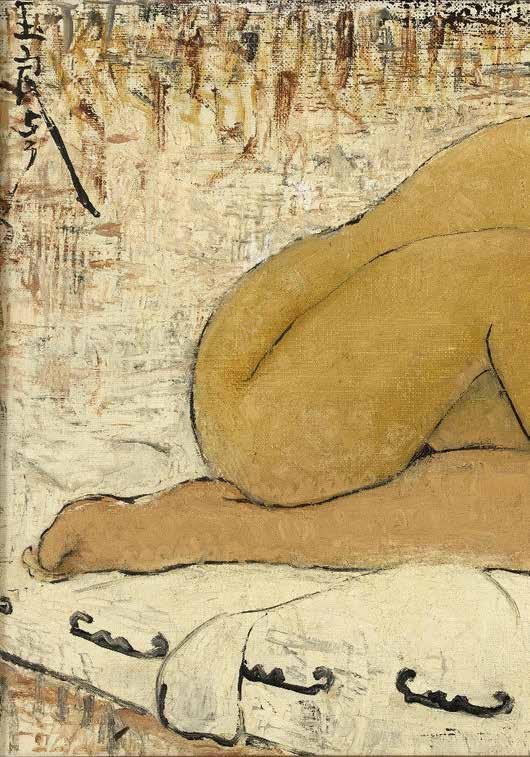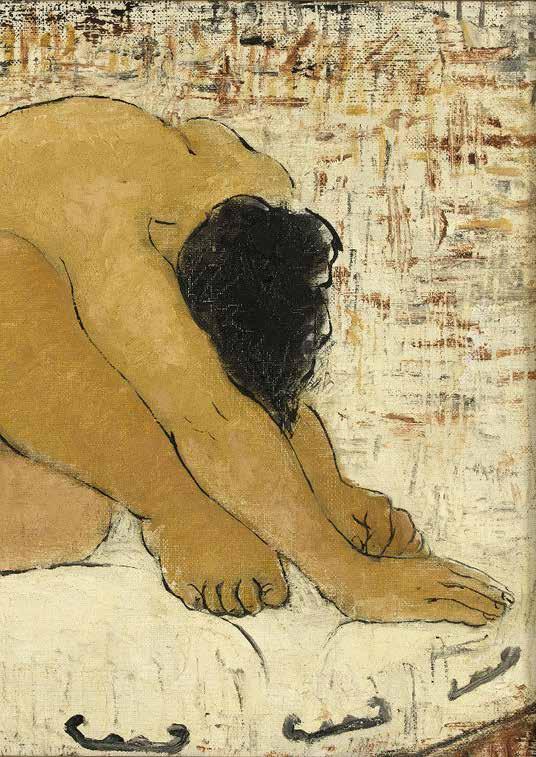
5 minute read
pan yuliang

Pan Yuliang By Martin A Bradley
Advertisement
Pan Yuliang (1895-1977) has been hailed as the Chinese premier female ‘modern’ artist. Many female Chinese artists have gone before her, such as those from the Ming Dynasty (1368-1644) and the Qing Dynasty (16441911), and there are those who studied art abroad in the early part of the 20th century such as He Xianning, Guan Zilan, Jin Qijing, Qiu Ti, Fang Junbi, Cai Weilian, Zhang Liying, Fang Zhaolin, Rong Junli, Zhang Qianying, Su Xuelin, Xiao Shufang, and Zhang Mojun. However Pan Yuliang has stood out alone for her mastery of art, and her diligence. Though overlooked in China for many decades, her work has been reintroduced into the canon of Chinese modern art, and gained an interest around the world.
China’s first ‘modern’ art academy, the Shanghai Art Academy (later to become the Shanghai Art School), was founded in the year of the Chinese revolution (1911- 1912), by a 16-year-old Liu Haisu who, two years later was responsible for the first public exhibitions (1913) and (in the Western fashion) using live nude models (first only male, then later female) within the classroom. But not without complaint. Nude modelling had to stop, for a while, to help society catch up with the idea. The Shanghai Art School, however, continued to encourage the combining of Western and Chinese painting techniques (xiyanghua). It was the first school of art in China to take in both male and female students although, initially, there was a separation between the sexes.
Pan Yuliang, one of the first female graduates of the Shanghai Art Academy, had been born in Yangzhou, Jiangsu Province, China, as Chen Xiuqing (1895). Her family ran a small business specializing in the production and sale of felt hats. Her father died before her first birthday and the business went into bankruptcy. When Pan Yuliang was two years old her elder sister died, and her mother died when she was eight. After that time she was raised by her uncle.
Chen Xiuqing was renamed Zhang Yuliang when she was fourteen years old, and had been adopted by her maternal uncle, from Wuhu, Anhui. There is a salacious, but false, story concerning her uncle selling her to a brothel, for which there is no evidence. It is a fiction which has since been re-created for a novel A soul haunted by painting by Shih Nan in 1984 and later made into a popular film of the same name. In reality, in 1910, at age 15, Pan Yuliang’s embroidery, making silk and velvet headdresses led her to an interest in design and painting. Over time she came to love music, sculpture and art, especially the colours used in painting.
In 1913, at age 18, Zhang Yuliang met and married Pan Zanhua who was, by all accounts, a young revolutionary. Zhang Yuliang took her husband’s

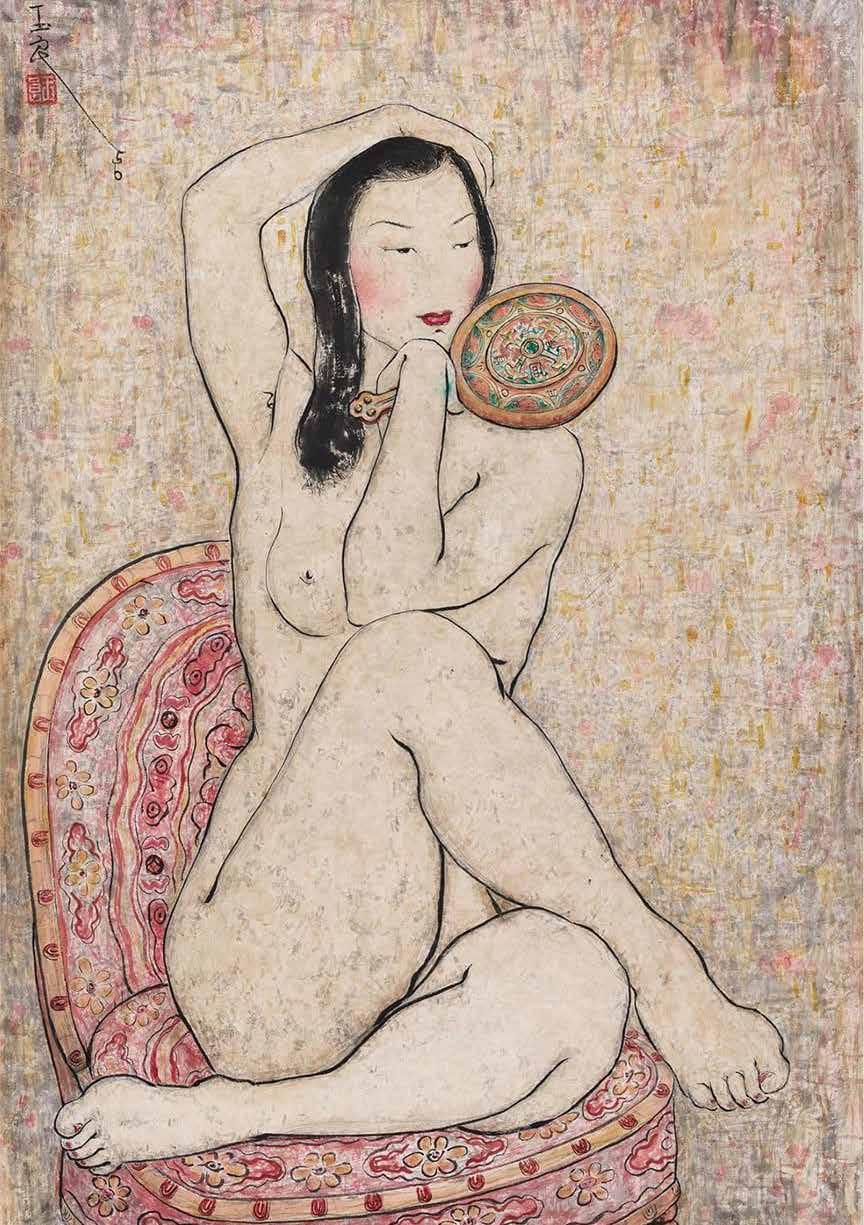
name, which was unusual in China at that time. That same year (1913), the couple moved to Shanghai and the freshly named Pan Yuliang started to study drawing with the teacher Hong Ye. In 1919, it is recorded that Pan Yuliang and another young female painter, Rong Junli, were among 11 graduates from Shanghai Chengdong Girls’ school who had requested entry to the Shanghai Art School.
At the age of 25 (1920), Pan Yuliang was accepted into the first coeducational class at the Shanghai Art Academy. The Academy was then teaching a Western style painting, with thanks to teachers and founder Liu Haisu, Wu Shiguang and Zhang Yuguang. In 1921, the diligent young artist Pan Yuliang was accepted by the Institute Franco-Chinois de Lyon (from Lyon, France),which was recruiting in China. She left the Shanghai Art Academy for France. Pan Yuliang attended the Ecole des beaux-arts (in Lyon) and studied under Xu beihong, and in 1923 studied at the Ecole des beaux-arts in Paris, graduating in 1925, just when the Chinese Republic had participated in the great Exposition internationale des Arts décoratifs et industriels modernes à Paris, held from April to the October of 1925. Pan Yuliang went on to study in Italy (at the Accademia del Belle Arti di Roma, Rome) studying oil painting and sculpture for two more years. Pan Yuliang had received a scholarship from the Italian Ministry of Education and had her paintings accepted for exhibitions in Italy. She was the first Chinese artist to receive this honour and the first eastern person entered into the Italy Roma Royal Academy of Arts.
This is not to deny that others, such as the female Chinese painter Wu Shujuan (aka Wu Xingfen 1853 - 1930), from Anhui, China, whose dozen plus paintings (at the 1910 World Fair in Turin), were purchased by Queen Elena of Italy.
Pan Yuliang returned to China and, in 1928/9, became the Dean of the Western Painting Department of Shanghai Art Academy and Shanghai Art University, later to become Professor of the National Central University’s Art Department. She held her first major exhibition on her initial return to China, and later many exhibitions in China and Japan.
Between the years 1931-1935, Pan Yuliang taught as a lecturer in the Fine Arts Department of the Central University in Nanjing. In 1934, the Shanghai Chung Hwa Book Company published The Oil Paintings of Pan Yuliang about her and her works. In 1937 she returned to France, where she stayed for the next forty years, melding Eastern and Western styles of art, and learning all the time about the different styles that French ‘Modernism’ was creating. She had produced some 4,000 works, mostly nudes of women.
Pan Yuliang had, effectively, exiled herself in France, living and dying alone in Paris, aged 78, ill and homesick for China, on July 22, 1977.
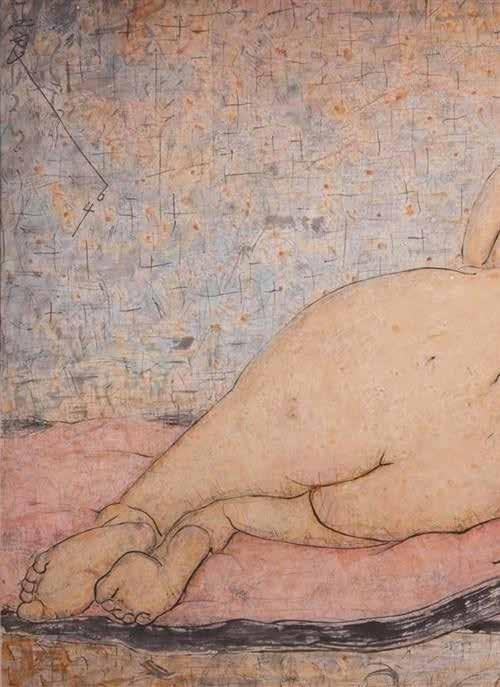
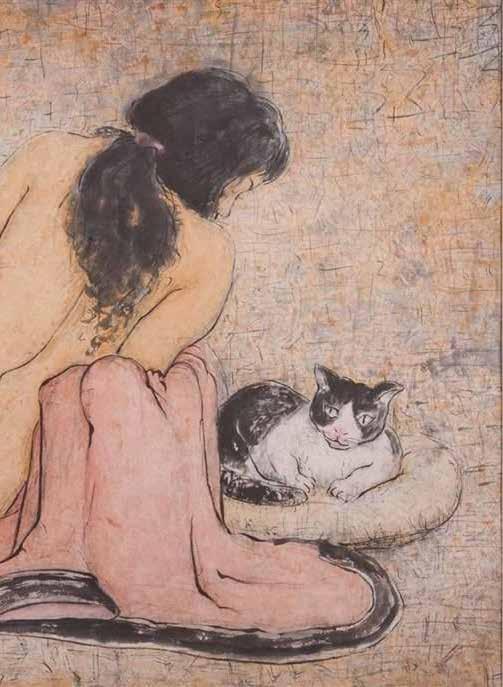
Woman watching a cat

Woman playing poker

Combing

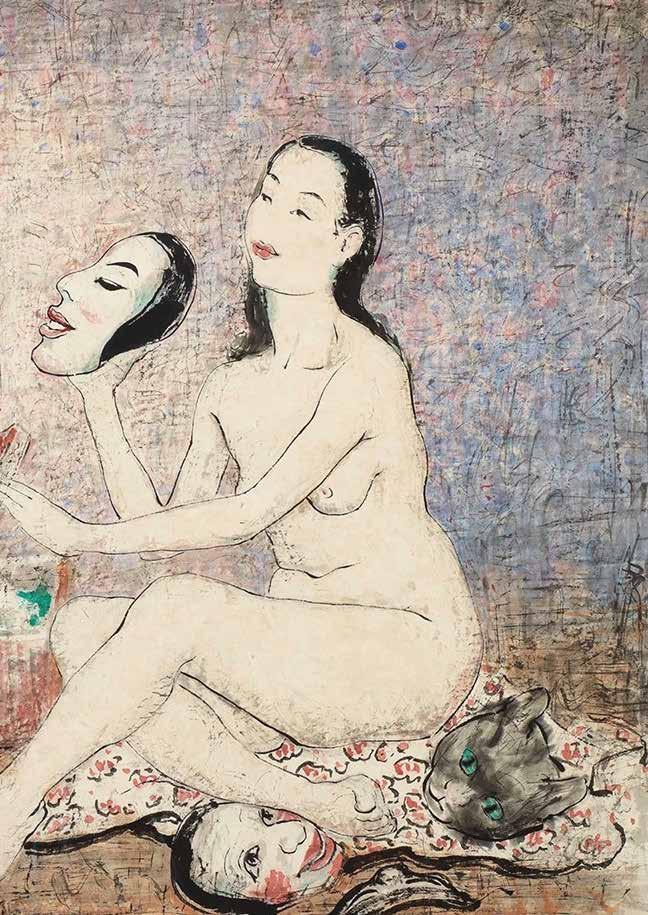


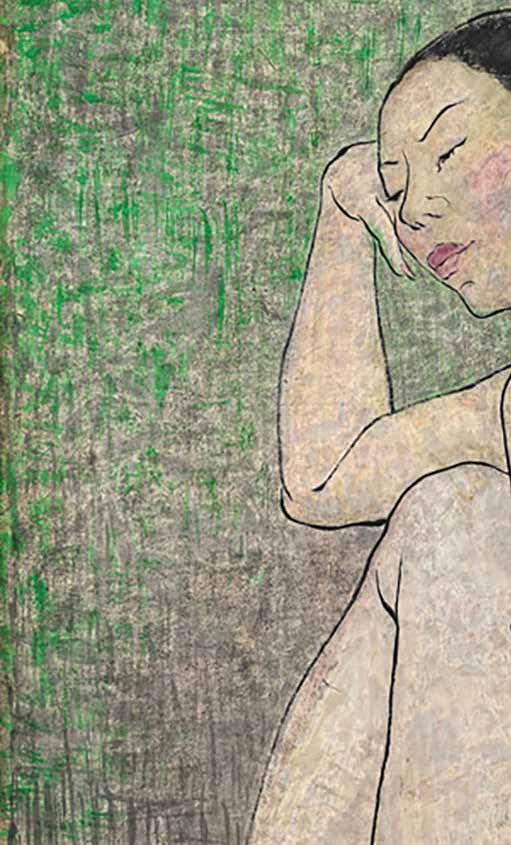
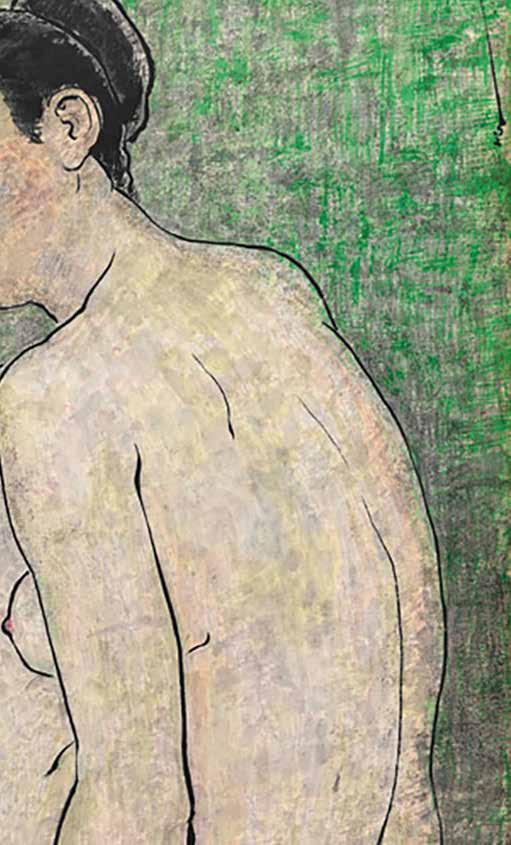
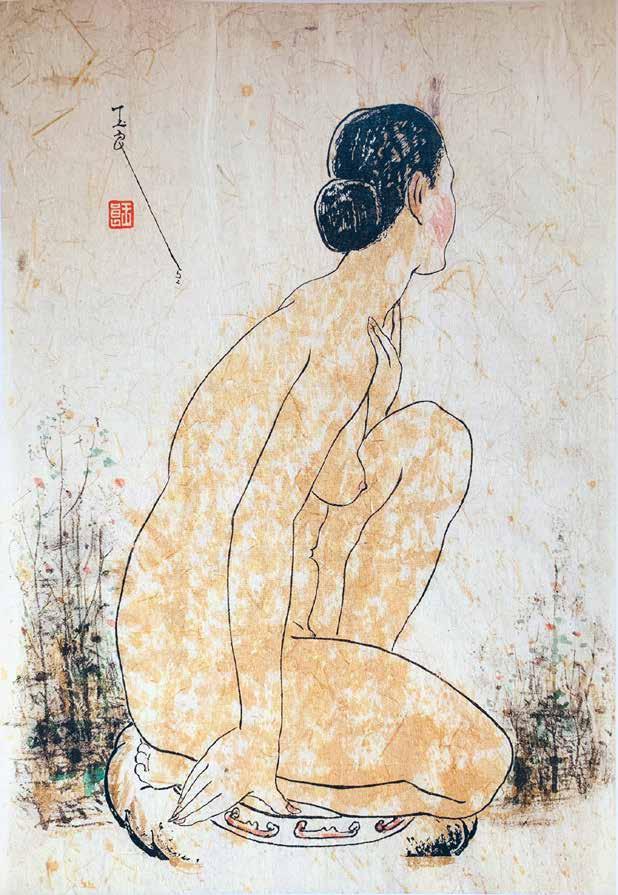
Solitary beauty
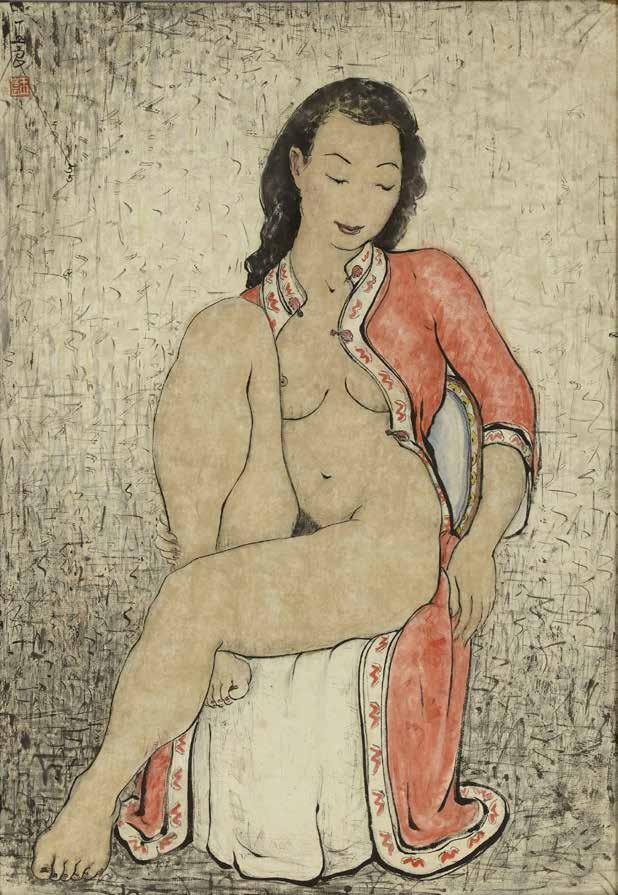
Nu assis au peignoir rouge
